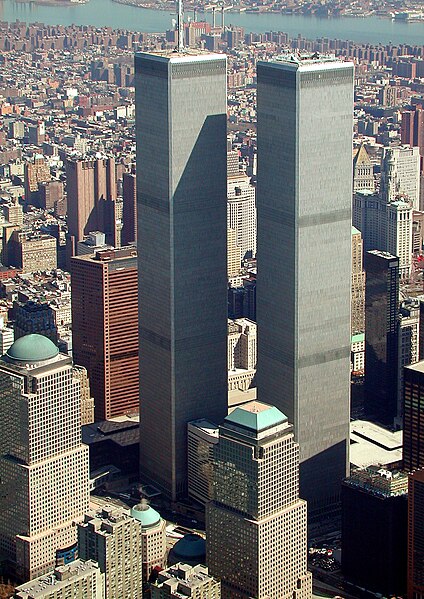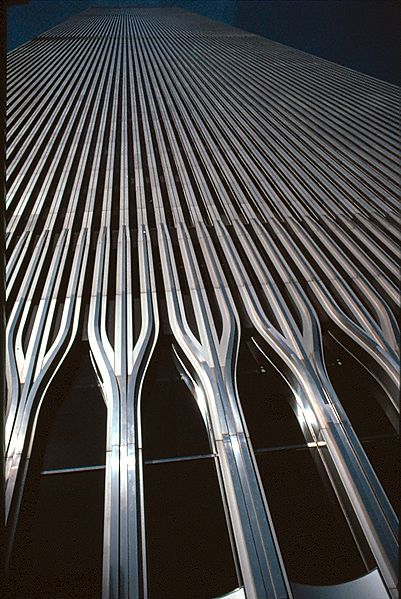Minoru Yamasaki was a Japanese-American architect, best known for designing the original World Trade Center in New York City and several other large-scale projects. Yamasaki was one of the most prominent architects of the 20th century. He and fellow architect Edward Durell Stone are generally considered to be the two master practitioners of "New Formalism".
Yamasaki in 1959
Pruitt–Igoe housing project, St. Louis, 1954 (demolished 1972–1976)
The original World Trade Center (1973–2001) was the most widely-known of Yamasaki's buildings.
World Trade Center (1973–2001)
The original World Trade Center (WTC) was a large complex of seven buildings in the Financial District of Lower Manhattan in New York City. It opened on April 4, 1973, and was destroyed during the September 11 attacks in 2001. At the time of their completion, the Twin Towers—the original 1 World Trade Center at 1,368 feet (417 m), and 2 World Trade Center at 1,362 feet (415.1 m)—were the tallest buildings in the world. Other buildings in the complex included the Marriott World Trade Center, 4 WTC, 5 WTC, 6 WTC, and 7 WTC. The complex contained 13,400,000 square feet (1,240,000 m2) of office space and, prior to its completion, was projected to accommodate an estimated 130,000 people.

The original complex in March 2001. The tower on the left, with antenna spire, was 1 WTC. The tower on the right was 2 WTC. All seven buildings of the WTC complex are partially visible. The red granite-clad building left of the Twin Towers was the original 7 World Trade Center. In the background is the East River.
Radio Row and Cortlandt Street station (background) in 1936
Lower Manhattan in 1980 with the twin towers visible in the background
The exterior frame of the Twin Towers in 1979






